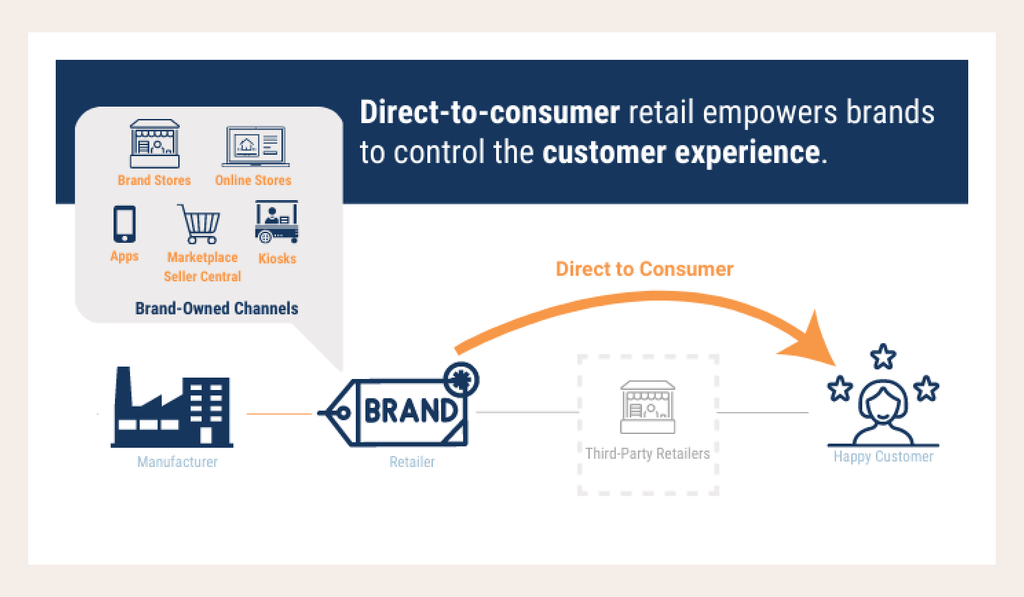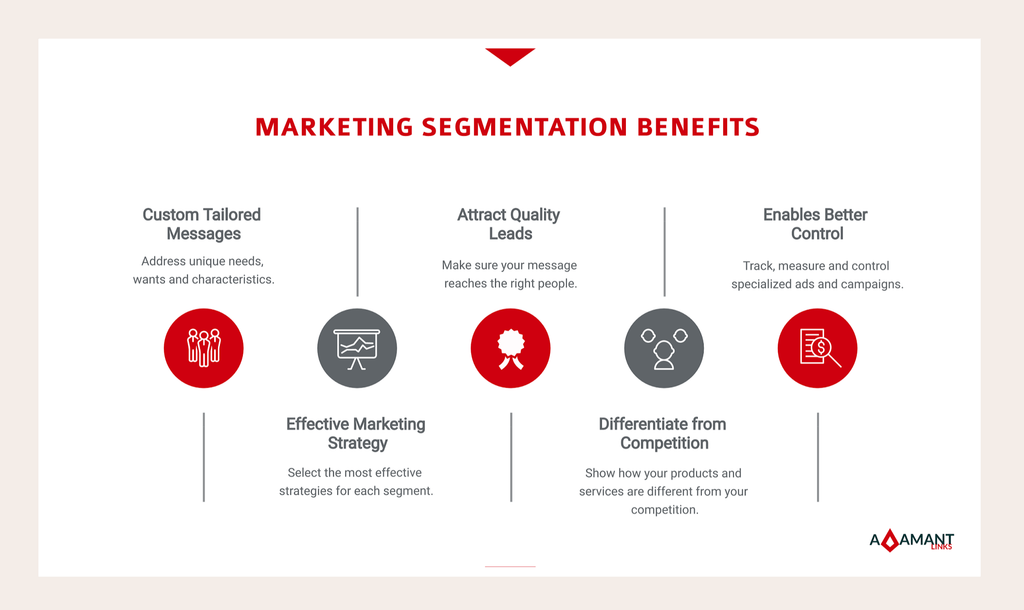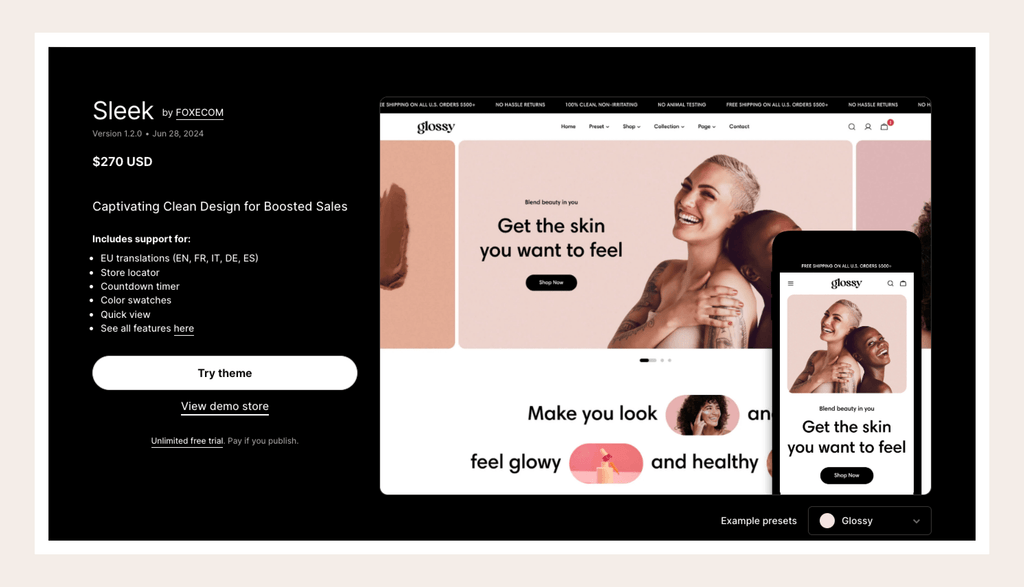Introduction
According to eMarketer, the U.S D2C eCommerce market is supposed to hit upwards of $226.53 billion by the year 2025, with established brand D2C eCommerce sales accounting for $186.6 billion of that total. A PwC survey showed that a significant portion of consumers, about 63% of respondents, have purchased products directly from a brand’s website.

As brands transition to Direct to Consumer models, they bypass wholesalers and retail stores to sell directly to customers. This shift allows brands to gain more control over their products, pricing, and customer experience.
In this article, you'll explore the benefits of D2C, understand why many brands are adopting this approach, and discover the challenges they might encounter. We'll provide step-by-step guidance on creating your own DTC eCommerce business, from setting up your online store to marketing your products and achieving your first sales.
Understanding D2C
What does D2C mean?
D2C, or DTC, stands for "direct to consumer." It's a business model where brands sell their products directly to customers, either online or in their store, instead of using a retailer.

D2C eCommerce is the process of selling directly to consumers online. For this, you'll need a D2C eCommerce platform— like Shopify or SquareSpace — to host your store and website. You'll also need a marketing strategy tailored for eCommerce to build your audience.
D2C business model
Here’s a simple breakdown of how D2C works:
In the D2C commerce model, brands manufacture and sell products through their channels like online stores and marketplaces such as Amazon, Etsy, and TikTok. They manage shipping either through their own logistics or third-party fulfillment services. By analyzing customer data and shopping behaviors, brands can create targeted strategies to grow their business and optimize performance throughout different sales seasons.
Why choose D2C
D2C eCommerce has big benefits, like building strong customer relationships and having good control of your branding. But it also has challenges, like high setup costs, finding your target market, and handling logistics. Here’s a closer look at the main pros and cons:
Benefits of the D2C model
- Direct relationship with customers: 65% of U.S. customers value a positive brand experience. D2C brands can connect directly with customers, enhancing relationships and understanding their needs, boosting brand value and loyalty.
- Greater control over branding and customer experience: 72% of customers stay loyal to companies with faster service, and 65% with personalized experiences. D2C brands can manage their brand presentation and customer experience, building a stronger identity and offering personalized service.
- Higher profit margins: By eliminating middlemen, brands can sell directly at retail prices, retaining more profit per sale.
- Faster innovation: Direct feedback enables brands to swiftly improve and launch new ideas without negotiating with wholesalers or retailers.
Challenges of D2C
- Do-it-yourself everything: D2C eCommerce requires brands to manage marketing, sales, shipping, and customer service, which can be overwhelming.
- Supply chain management: Managing inventory, shipping, and customer service is challenging, especially for growing smaller D2C brands, often requiring third-party logistics partners.
- Customer acquisition and retention: Attracting and retaining customers demands continuous effort and investment in marketing and customer service.
How to start your D2C eCommerce business?
1. Identifying your niche and winning product strategy
There’s a saying: “Sell what customers want, not what you want to sell.”
This means finding the right niche and target audience is crucial in eCommerce. It helps you stand out, better understand customer needs, face less competition, stay close to your audience, and grow faster.

Explore market
Exploring the market is essential for D2C brands. It helps understand customer needs, spot competitors' strengths and weaknesses, and find market trends and opportunities. Follow these steps for a clearer picture:
- Target Audience: Figure out their age, gender, interests, problems, and shopping habits, to create buying persona.
- Competitor Analysis: Check out existing competitors to see what they do well and where they fall short.
- Market Trends: Look at current trends, demand, and growth opportunities in your niche.
- Keyword Tools: Use tools like Ahrefs, Moz, SEMrush, or Similarweb to find popular search terms related to your niche.
- Social Listening: Monitor social media to gauge customer feelings and feedback.
- Surveys and Interviews: Collect direct insights from potential customers through surveys and interviews.
Define Market Segments and Needs
Segmenting the market is crucial for targeting the right audience and meeting their unique needs in D2C brands.
- Customer needs: Understand what your customers need and pain points. This helps you create products that address their specific wants and needs.
- Customer satisfaction: Evaluate how happy customers are with current products. This can reveal market gaps that your product can fill. Read How to measure customer satisfaction: 4 key metrics to understand more.
- Market segments: Group customers with similar needs into specific segments. This allows for more focused marketing and product development.
- Industry Analysis: Use frameworks like Porter’s 5 Forces, PESTEL Analysis, and SWOT Analysis to get a clear picture of the market environment and competition.
Brainstorm solution
Brainstorming solutions is important because it helps clarify the product concept before launching to the mass market.

- High-Level Concept: Define your product’s main idea, purpose, and benefits. This helps everyone understand what your product aims to achieve.
- Product Feature Set: List the key features your product will have, focusing on those that solve the biggest problems for your customers.
- Marketing Channels: Decide where you will reach your customers, like online stores, social media, and marketplaces.
- Pricing: Set a pricing strategy that reflects your product’s value while staying competitive.
- Positioning and Messaging: Create clear and engaging messaging that shows off the unique benefits of your product to your target audience.
- Product Assumptions: Make educated guesses about how your product will do. Think about customer engagement, value, usability, feasibility, viability, and any ethical issues.
Validate product assumptions
D2C brands validate product assumptions to determine if their products are ready to launch and if customers are satisfied with the solution.

Source: adamfard
Here are some must-haves to consider:
- Market Engagement: Test the market response by creating a prototype or small batch of your product before a full launch.
- Product’s Value: Gather feedback from early customers to see how they perceive your product’s value and make any needed changes.
- Product’s Usability: Check if your product is user-friendly by conducting usability testing and fixing any issues.
- Product’s Feasibility and Viability: Make sure your product can be produced and delivered at scale while maintaining quality and profitability.
- Ethics: Ensure your product meets ethical standards and aligns with your brand values and customer expectations.
By focusing on these key elements, your D2C eCommerce business can increase your chances of creating a winning product that resonates with your target audience and drives success.
2. Building your online store
More than 50% of consumers opt to visit brand websites because they offer more comprehensive information and guides. So owning a branded website is of the most importance for D2C business.
Now let’s deep dive into how to build an online store.
Choose a reliable eCommerce platform
Choosing the right platform is crucial when starting an online business, as it will be the central hub for managing everything from inventory to marketing.

- Usability: The platform should be user-friendly with clear navigation and a simple checkout process, allowing merchants to manage their stores efficiently without extensive technical skills.
- Customization: Choose a platform that offers flexible design options, from pre-designed templates to advanced customization for those with coding skills, to create a unique online presence.
- Checkout: A smooth checkout experience is crucial for turning visitors into customers. The platform should offer various payment options and ensure secure transactions to build trust.
- Hosting: Reliable web hosting is essential for your store’s success. Some platforms include built-in hosting, while others let you integrate with third-party hosting providers.
Given these features, Shopify stands out as a top choice for the D2C business model. It’s user-friendly, customizable, secure, and comes with strong marketing tools and excellent support.
Shopify’s scalability and integration options make it ideal for managing your online store smoothly.
Choose a theme and build your store layout
There are several ways to set up your D2C store layout, but starting with a theme is highly recommended. Shopify offers hundreds of customizable themes, both free and paid, to help you get your store up and running quickly. Here are a few recommendations for choosing a Shopify theme:
Dawn - a standard free theme to start out
Source: Shopify theme
Dawn is Shopify’s default theme, designed for speed and flexibility with a simple, modern look. It’s ideal for quick setup and easy customization with sections and blocks but may lack advanced features for further storefront customization.
You can check out Dawn's demo store to see how it looks in action.
🔥 Want to know more about the Dawn theme? Check it out: Shopify Dawn Theme Review
Origin - a stylish free theme to be creative

Source: Shopify theme
Origin is a stylish Shopify theme ideal for selling unique items like bags and handmade products. It supports easy customization with sections and blocks, making it great for a quick setup and a distinctive look. However, like Dawn, it might lack advanced design features for fully enhancing a D2C eCommerce business.
You can visit the Origin’s demo store to learn more.
Sleek - built with smooth interactivity to optimize UX

Source: Shopify theme
Sleek is ideal for high-volume stores handling many transactions quickly. It offers a fast, simple setup, allowing you to start selling sooner. Suitable for healthcare, fashion, and beauty stores, Sleek’s clean, attractive design enhances the shopping experience and can boost sales.
Visit the Sleek store demos to learn more.
Zest - formed for mobile win
Zest offers a flexible, modern design optimized for mobile conversions. With most shoppers using smartphones, it's crucial for D2C brands to have a responsive layout. Zest’s versatile design and advanced features enable the creation of eye-catching sections focused on boosting conversions, helping to grow your online business.
Visit Zest demo store to explore 5 different demo stores and see how they perform across industries like beauty, fashion, and healthcare.
📚 You may also like:
- 5 Incredible Ideas to Create Interactive Websites for Shopify Stores
- Shopify Store Design: 5 Essential Factors You Need to Know
3. Setting up efficient operations
Operating a D2C brand requires significant effort and resources, as the brand must handle everything independently. Here are the top priorities for efficient operations:
Inventory management
Efficient inventory management ensures that your stock levels are accurate, helping to prevent overstocking or stockouts.

- Implement an inventory system: Choose a robust inventory management system that integrates with Shopify to track stock levels, manage orders, and forecast demand.
- Real-time tracking: Ensure real-time updates to keep inventory levels accurate and prevent stockouts or overstocking.
- Re-order points: Set up automated reorder points to maintain optimal stock levels and avoid disruptions.
- Supplier coordination: Maintain good relationships with suppliers and use automated purchase orders to streamline restocking.
- Thrive by Shopventory: Connect multiple Shopify accounts and automate purchase orders.
- Stocky: Powerful and detailed real-time inventory tracking.
- Zoho: Integrates with Zoho CRM and Zoho Books.
Order fulfillment
Effective order fulfilment ensures that your customers receive their orders quickly and accurately. Below is the standard process of order fulfilment for a D2C store:
- Choose a fulfillment method: Decide whether you will handle fulfillment in-house or outsource it to a third-party provider.
- Streamline processing: Develop a clear workflow for processing orders, including picking, packing, and shipping.
- Integrate shipping solutions: Use apps to automate shipping label creation and track orders to ensure timely delivery.
- ShipBob: Offer fulfilment center services with real-time tracking and integration with Shopify for automated order fulfilment.
- ShipStation: Manage shipping label creation, integrate with multiple carriers, and connect with Shopify to streamline shipping processes.
- Easyship: Deliver global shipping solutions and automated customs documentation, integrated with Shopify for efficient international shipping.
Customer service
Accenture reports that businesses viewing customer service as a value center achieve revenue growth 3.5 times greater than those who do not. So D2C brands need to focus on providing exceptional customer service to enhance the shopping experience and foster brand loyalty.
- Train employees: Invest in training programs for your customer service team. Ensure they understand your products, policies, and the best practices for handling customer interactions. This will help them provide more effective and empathetic support.
- Offer multi-channel support: Provide support through various channels such as website, email, chat, and social media to meet different customer preferences.
- Implement a ticketing system: Use a ticketing system to track and manage customer inquiries and issues efficiently.
- Automate responses: Set up automated responses for common questions to improve response times and customer satisfaction.
- Zendesk: Provides a comprehensive support platform with multi-channel support, a ticketing system, and integration with Shopify for a unified customer service experience.
- Freshdesk: Offers ticket management, live chat, and email support, connecting with Shopify to streamline customer service processes.
- Gorgias: Integrates customer support across email, chat, and social media with Shopify, providing a centralized platform for managing customer interactions.
4. Set up marketing and sales strategies
Marketing strategies
Effectively implementing marketing strategies is crucial for driving growth and attracting customers to your D2C brand. Start by identifying your target audience and crafting tailored marketing campaigns that speak directly to their needs and preferences.
Utilize various channels such as social media, email marketing, influencer marketing, and content marketing to reach your audience where they are most active.
Sales strategies
Increasing sales can be effectively achieved through upselling and cross-selling strategies. It's a great idea to use a Shopify app that supports features such as product bundles, quantity discounts, in-cart upsell, pre-purchase recommendations, stock scarcity, etc.

Product bundles example. Source: Minimog demo store
Consider FoxKit, the all-in-one app for upselling, cross-selling, and boosting sales.
Summary
Building a successful D2C brand on Shopify is an exciting journey that requires dedication, creativity, and a deep understanding of your target audience. By combining your unique vision with the right tools and strategies, you can create a business that not only thrives but also inspires others.
Are you ready to embark on your D2C adventure? Start building your Shopify store today and unlock the potential of direct-to-consumer sales.







